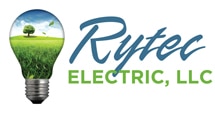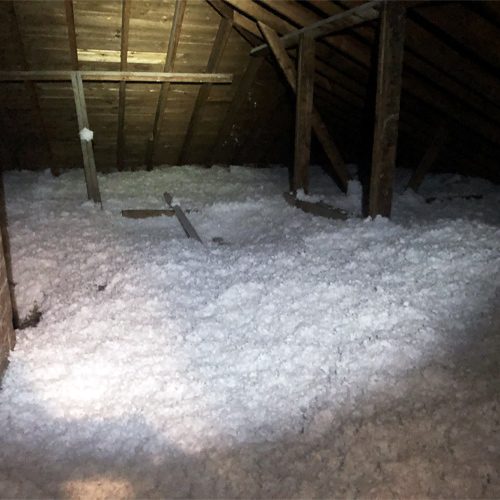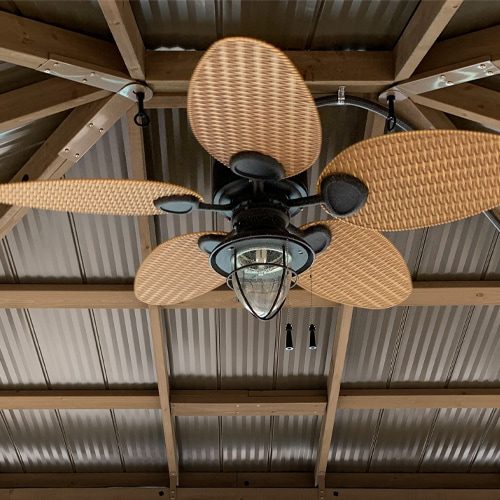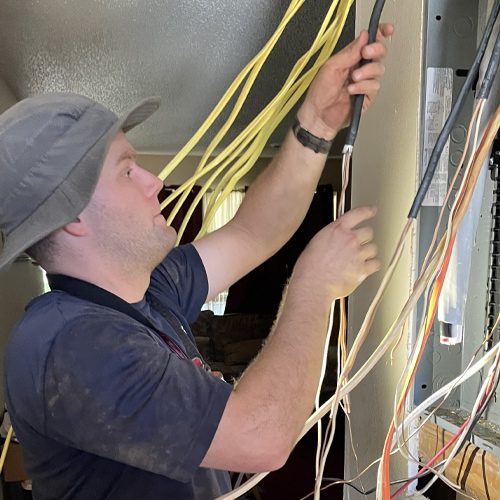11 Tips to Lower Your Energy Bill in the Summer
Summer is approaching and the majority of homeowners want to use less energy to lower their monthly utility bill while staying cool and comfortable. Many people aren’t aware of the main contributors to their high energy costs – or the easy ways they can minimize their impact. If you’re looking for ways to reduce your energy bill this summer, read on.
Find and fix any gaps in doors and windows
Did you know you can simultaneously reduce your energy bill and prolong the life of your home’s A/C unit just by closing gaps in your doors and windows?
Unsealed doors and windows are allowing your hard-earned dollars to flow out into the hot summer sun! Slow leaks are one of the largest reasons why homeowners experience high electric bills. With cool air exiting and hot air entering your home, your air conditioning unit is forced to continue pumping out cool air to try to keep you comfortable.
According to Energy Star, simple DIY fixes like installing weather stripping on doors and caulking around windows can reduce your energy bills by as much as ten percent! But there are bigger jobs that require professionals to seal your home such as repairing large gaps and adding insulation to your attic. In the long-run these repairs are proven to save money and lower your electricity bill in the summer months.
Check Your Attic Insulation
Most attics have already been insulated before the home is purchased – but older homes often have less insulation than is ideal. Even in newer homes, attics are often the easiest place to improve your home’s energy efficiency.
It is easy to check your attic to see if adding more insulation could help you reduce your utility bill. If your attic’s insulation, regardless of the type, is level with or below the floor joists, you should add more insulation. If it is well above the floor joists, adding insulation probably isn’t necessary. Also, it is important that your insulation cover the entire surface of your attic – edge to edge!
When installing insulation, you don’t necessarily have to use the same type of insulation that was originally installed in the home. Oftentimes you’ll be able to simply add more insulation atop what you’ve already got!
Check your crawlspace for excess moisture
Excess humidity in your crawl space can force your A/C to work overtime. When your crawl space is excessively humid, mold can grow and damage the insulation or even negatively impact the air you breathe! If your crawl space is insulated improperly, air-conditioned air can flow down into it from inside your home, reducing your air conditioner unit’s efficiency and making any existing moisture problems worse.
To learn how to determine whether or not you should dehumidify your crawl space, check out what the experts over at Dragon Vapor Barriers of Columbia, South Carolina have to say about it.
Check your air conditioner for efficiency
Your air conditioning unit’s efficiency directly affects your summer electric bill. Determine whether or not your air conditioner is working efficiently by following these quick and easy steps:
- First, turn the A/C unit on
Try this on a hot summer day ideally when the weather is 80 degrees Fahrenheit or higher. Turn your air conditioner on and leave it running for 15 minutes.
It may sound odd to test your air conditioner in South Carolina’s scorching summer heat, but the best time to check your unit’s efficiency is on a hot day where it’ll have to work hard to deliver cold air. - Place a thermometer in the air supply vent
Put the thermometer in the vent closest to your cooling equipment. This will assure that you’re getting the most accurate reading of the temperature of the air exiting your vents. Leave the thermometer in place until the reading stabilizes. Write this temperature down. - Repeat thermometer reading at the HVAC return vent
Repeat the thermometer reading process at the HVAC return vent – take note of this temperature. - Do some quick and easy math
To determine if your air conditioning system is working properly, the air coming out of your supply vents should be at least 15 degrees cooler than the air being pulled into the return vent. If the difference is less than 15 degrees then your air conditioning unit may not be operating at peak efficiency and should be inspected.
Calibrate your thermostat or get a smart thermostat
We all take the temperature that our thermostat reads for granted: after all it’s just a thermometer with some switches right? Well, thermostats need to be calibrated every few years in order to continue offering accurate temperature readings!
- Check for accuracy
Checking the calibration of your thermostat should be done once a year. To do this simply go to your thermostat and tape an accurate thermometer next to it. Wait 15 minutes and check both devices. It’s generally expected for there to be a 3 degree difference, however anything exceeding that range may mean you need to repair or replace your thermostat. - Calibrate or replace if needed
All thermostats have different calibration procedures. Look up the manufacturer’s name and model number for the correct procedure. If calibration doesn’t help, you may need to replace your current unit.
If you need to replace your thermostat, consider replacing it with a smart thermostat. The advantages of a smart thermostat are nearly endless, but their chief advantage is their ability to learn a household’s patterns. This reduces the use of heating and cooling when nobody is home for long periods of time. Some units can even anticipate when you’ll get home from work and will ensure that your house has reached a comfortable temperature just as you arrive home!
Smart thermostats are programmable thermostats that, like many other smart devices, are connected to your WiFi. Different companies have unique designs with different features, but commonly they include:
- The ability to learn your temperature preference and create a schedule to automatically switch to energy-saving temperatures when you’re not home
- The ability to set your temperature and preferences from your smartphone.
- Data collection that allows you to monitor trends in your energy use
The benefits of having a smart thermostat are numerous – many models even offer integration with smart home gadgets like security cameras, smoke alarms, and ceiling fans. A smart thermostat can help you save money on your energy bill. A smart thermostat can reduce your energy bill by up to $200 a year.
that the ENERGY STAR label is a reliable sign of quality equipment that has been independently certified to deliver energy savings. Look for smart thermostats that have the ENERGY STAR label to ensure the efficiency of your thermostRemember at. For more information, check out ENERGY STAR’s complete guide on what to know and look for when purchasing a smart thermostat.
Turn on your ceiling fans
Ceiling fans can help make your rooms more comfortable and thus help you save money on your energy bill. According to HeatingCoolingHome.com, ceiling fans “produce a comfortable breeze or ‘wind chill’ to cool the skin during the hot weather. Ceiling fans do not actually cool the room, but the ceiling fan rotation allows improved air circulation.”
But don’t think that ceiling fans are just for keeping cool in the summer. In the winter try turning your fans onto their lowest speed, allowing them to gently push the warm air at the ceiling down to floor level where you can enjoy it.
Something to keep in mind: as ceiling fans do not directly cool rooms they should be turned off when no one is in the room. The cooling effect that fans provide only works when it can be experienced!
Close curtains and blinds during the day
Shutting your curtains or blinds during the day is a great way to help out your A/C unit while you’re away at work. This is particularly important for south facing windows which will (at least in the northern hemisphere) have sun throughout the day.
If you live in an environment with harsh winters, consider investing in heavier, insulated curtains. Not only will these help keep your house cool during hot summer days, but they can block drafts coming off of your windows and help to keep your house more comfortable during cold winter nights!
Get your home’s windows tinted
Large windows are a great feature as they let in lots of light and offer great views. Unfortunately, during the summer months this light brings with it plenty of heat which can cause certain rooms to become unbearable and force your A/C unit to work overtime.
Blinds and curtains are certainly an option, but when in use they limit your ability to enjoy the views your large windows provide! The solution is remarkably clear: home window tinting. While most people are familiar with window tints for cars, these heat blocking solar films for houses allow you to enjoy the view without feeling like you’re in an oven.
As an added benefit these films can offer real privacy – allowing you to see the outside world without inviting the neighbors to watch you too!
Grill more often
Cooking in the summer pits two of your house’s biggest energy-consuming appliances against each other: your HVAC versus your oven. Cooking in the oven or on the stove uses energy and warms your house, forcing your A/C unit to kick in to cool it back down. One solution to this problem is to take your cooking outside by grilling!
Swap to more energy efficient light bulbs
You may have noticed that it has become nearly impossible to find traditional incandescent bulbs anymore, and that’s for good reason. While these old-fashioned bulbs emitted a pleasant light, 90% of their energy use was wasted as heat! In the winter you could make an argument for this waste heat having some value – but in the summer months this is yet more heat your A/C unit has to get rid of.
Today newer energy-saving lightbulbs provide a wide variety of color choices and light levels. The new lights are much more efficient, longer lasting, and save you money.
What Are My Lighting Choices?
You have many choices in energy-efficient lighting. The most popular light bulbs available are halogen incandescents, compact fluorescent lamps (CFLs), and light-emitting diodes (LEDs). Halogen incandescents are the least energy efficient of the three, but offer a pleasing and true light.
If your memory of compact fluorescent lamps is blue-tinged and flickery, don’t be afraid to try them out again. Modern CFL’s are flicker-free and can produce light that effectively mimics the warmer temperatures of incandescent bulbs.
Controls such as timers and light sensors save electricity by turning lights off when not in use. Dimmers save electricity when used to lower light levels. Be sure to select products that are compatible with the energy-efficient bulbs you want to use.
For lights that are left on for long periods of time, you should use CFLs or LEDs as their power consumption is vastly lower when compared to their alternatives. Most CFL’s are rated to be used in enclosed outdoor fixtures and outdoor rated CFL and LED floodlights are readily available at your hardware store. Keep an eye out for ENERGY-STAR certifications – often these bulbs will include built-in motion or automatic daylight shut-off sensors.
Install ENERGY STAR appliances
The next time you’re looking to replace any of your appliances, keep an eye out for the ENERGY STAR rating. This label means that a particular product meets or exceeds the federally mandated policies with regard to energy efficiency. The labeling requirement for appliances varies in accordance to the product it’s being applied to, as not all types of appliances do the same thing.
For example, the water requirements a dishwasher must meet in order to get an Energy Star rating are not the same as for washing machines. That said, most appliances and products today, from air conditioners to air purifiers, from washers to water heaters, frequently come with an Energy Star rating.
What Makes a Product ENERGY STAR rated?
The standards for what makes a product Energy Star rated vary widely by appliance, but all of the requirements are strict and products are tested to ensure they qualify. In fact, the EPA makes sure that every appliance earning the Energy Star label is independently certified in order to provide the energy efficiency, overall performance, and cost savings that people have come to expect from these products.
To learn more about Energy Star labels and what they mean, check out this blog post. If you want to be sure that you’re not overpaying for your summer utility bills, give us a call! We’ll make sure you stay cool this summer without breaking the bank.



